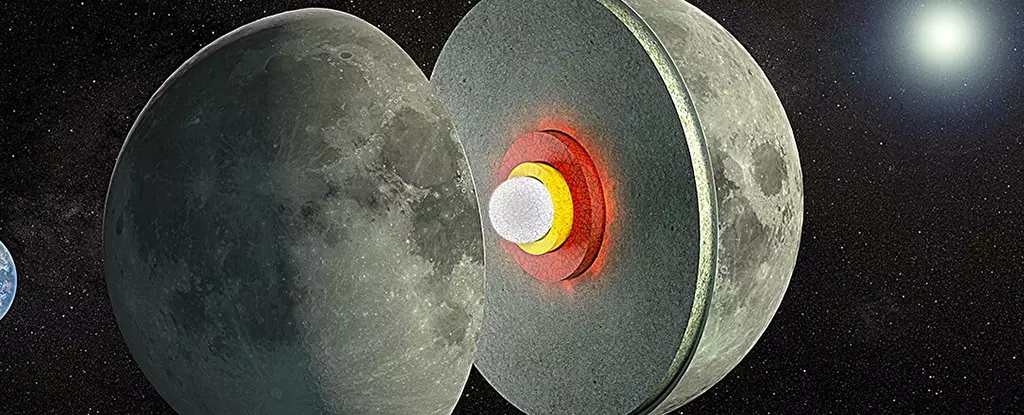In our quest to unlock the secrets of celestial bodies, the Moon has long been a focal point of exploration and study. New research suggests that the Moon’s interior is more complex than previously understood, particularly concerning the presence of a partially-molten layer situated between its rocky mantle and solid metal core. This revelation stems from data that highlights the Moon’s changing shape and gravitational effects, a recent study led by scientists at NASA’s Goddard Space Flight Center and the University of Arizona provides a deeper understanding of this lunar enigma.
The notion of a non-solid layer beneath the Moon’s surface has been floated within the scientific community for decades, but empirical evidence has been sparse. The study sheds light on the Moon’s rigidity as it is influenced by Earth and the Sun’s gravitational pull, indicating that the internal structure is unlikely to be wholly solid. The findings suggest that under the Moon’s mantle exists a lower-viscosity zone (LVZ)—a gooey layer that behaves similarly to tides, fluctuating based on external gravitational forces.
To validate their hypotheses, researchers utilized advanced measurements from NASA’s Gravity Recovery and Interior Laboratory (GRAIL) and the Lunar Reconnaissance Orbiter. These instruments have provided unprecedented insights into the Moon’s gravitational field, allowing scientists to gauge how the Moon’s physical shape and gravity fluctuate over time. This study marks the first occasion that researchers have been able to monitor lunar tidal changes on an annual basis, thereby contributing to a more nuanced understanding of its internal dynamics.
The LVZ’s implications are profound, raising questions about its formation and thermal state. How did this pliable layer develop? What geological processes are responsible for maintaining its heat? The team behind the study postulates that the presence of ilmenite—a mineral rich in titanium-iron oxide—may play a crucial role. Notably, this proposal draws parallels to recent seismic investigations on Mars, which also suggested a partially-melted layer beneath the crust.
Understanding the Moon through the lens of planetary science enriches our knowledge of its evolution. The presence of an LVZ indicates that the Moon shares certain geological characteristics with Mars, hinting at a more dynamic history than previously attributed. Researchers analyze olivine—the dominant mineral in the lunar mantle—hoping to unravel the complex geological narrative written over billions of years. This comparative approach not only broadens our understanding of lunar geology but also enhances our knowledge of planetary formation in the solar system.
The prospect of establishing a permanent lunar presence tantalizes researchers and space enthusiasts alike. Such a base would facilitate direct geological sampling and seismic readings, providing critical data for investigating the Moon’s unknown depths. The potential existence of the LVZ underscores the Moon’s intricate thermal history and evolution, which has practical implications for future lunar exploration and resource utilization.
This new understanding of the Moon’s geological structure carries substantial implications for future research. Establishing whether the lunar mantle indeed harbors this partially-molten zone could revolutionize our comprehension of not just the Moon’s history but also its potential role in broader planetary science. As we continue to explore our celestial neighbor, the insights gained from this study on the Moon’s internal composition and its implications for exploration efforts will undoubtedly lay the groundwork for the next generation of lunar science. The Moon, once a mere subject of myth, is slowly revealing its complexities—offering researchers a new frontier in our unending quest for knowledge about the universe.


Leave a Reply